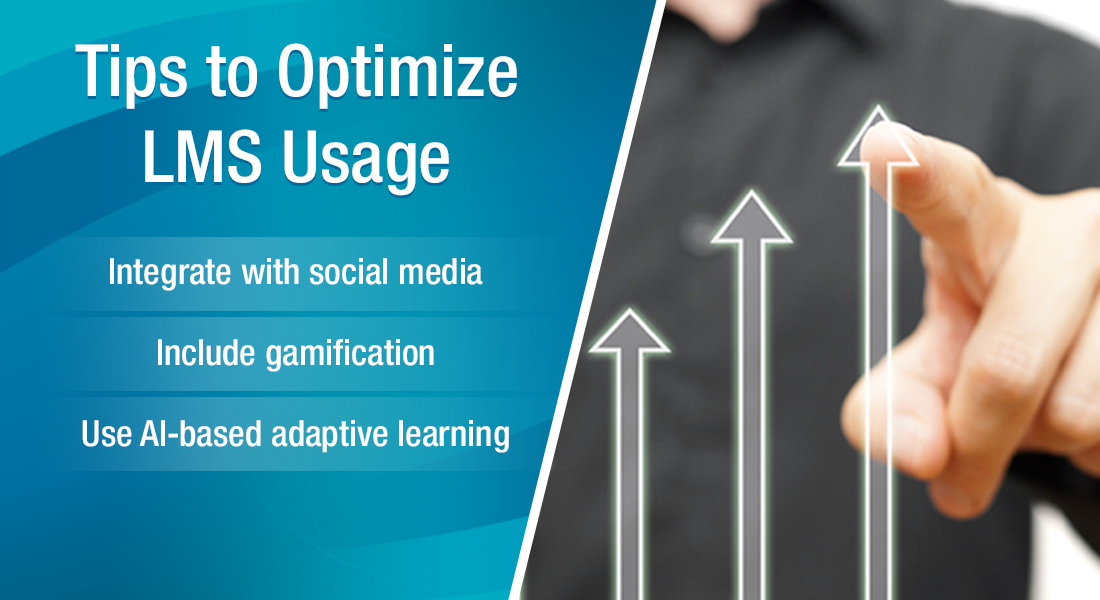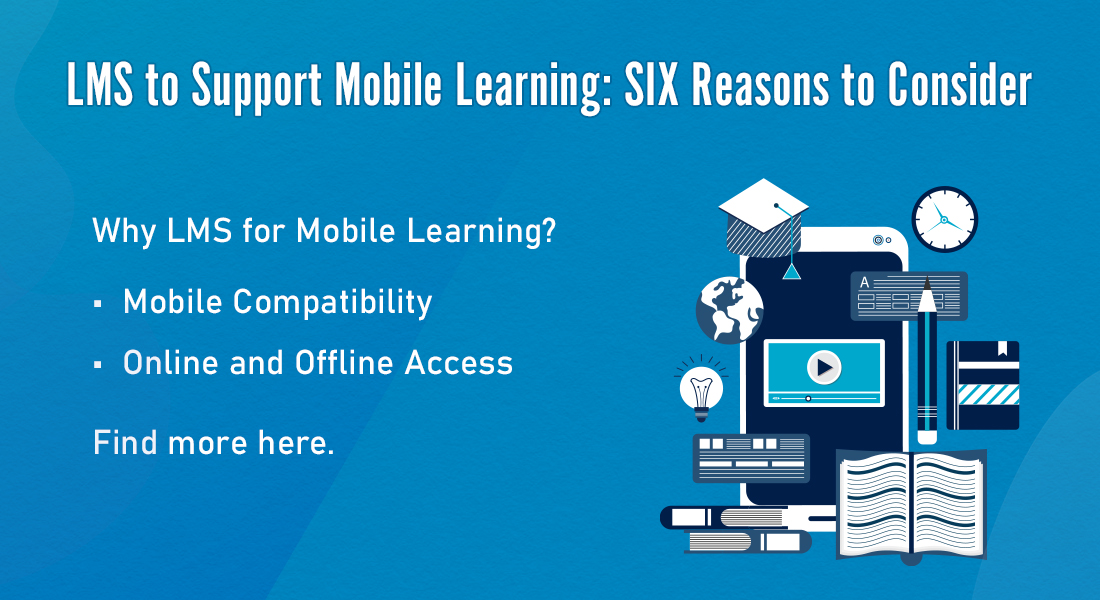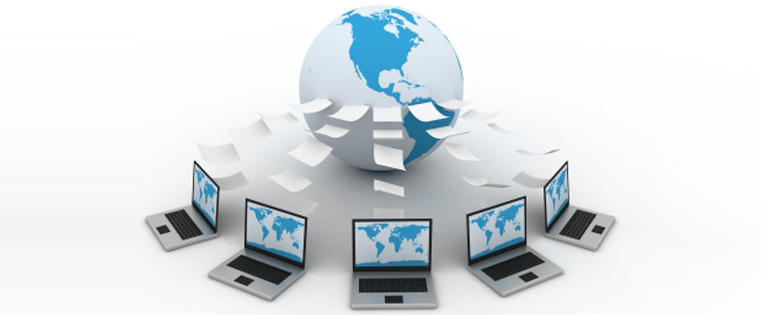5 Tips to Maximize the Investment on Your LMS

Wondering why you’re not getting the expected results from your Learning Management System (LMS)? Looking for ways to use an LMS optimally? This blog will give you 5 great tips to make the most of your LMS. But before we get started, let’s understand what an LMS is and what role it plays in corporate training, shall we?
LMS Optimization
5 Helpful Tips
- Tailor your LMS to fit your training needs
- Integrate with social media
- Integrate with virtual classrooms
- Gamify the platform
- Support personalized learning
An LMS is an online platform that is designed to:
- Schedule and roll out training activities
- Track employee performance
- Serve as a repository of training material
Explore Effectus LMS – a modern-day LMS for all your training needs.
An LMS is the warehouse of learning resources. LMSs have evolved so much over the past few years that the modern LMS can be used by training managers or administrators as a centralized learning platform to carry out a variety of tasks such as:
- Managing blended learning and social learning
- Providing personalized learning experiences
- Supporting gamified learning
- Supporting mobile learning
- Providing multilingual access
All these features of the modern LMS make the process of learning more immersive and effective, leading to better results and optimized ROI for the organization. Several LMSs are available in the market today and most of them come with built-in features that can give you wonderful results, but only if used properly to their full potential!
Now that you have a fair idea of the role an LMS plays in the eLearning world, let’s look at 5 great tips to optimally use an LMS.
Tips to Make the Most of an LMS
1. Tailor your LMS to Fit your Organizational Training Needs
Like any other technological solution, LMSs too have had an interesting evolutionary history. Earlier versions of LMSs were rigid and structured only to serve one simple function i.e., hosting eLearning courses. But modern LMSs can so much more than just that! And what’s even more exciting is that you can customize them to fit your organizational training needs.
While not all LMSs allow the same range in customization, you can always start with simple branding changes to create a more personalized learning experience. Something as simple as having your logo or color palette can help reflect your organizations’ vision and values, and enable learners to connect with them.
Moreover, customization will allow you to add elements like gamified dashboards and social features such as chatboxes, discussion forums, and posting and sharing of user generated content to encourage continuous and collaborative learning.
LMS customization can also be done for advanced tracking and generating detailed reports on learner activities. Customized reports will give a better insight into how exactly training helps learners and what measures needs to be taken to ensure better results.
2. Encourage Collaborative Learning by Integrating with Social Media
Social learning is an important element of new-age organizational training. Gone are the days when social learning was considered informal and depended just on your social relationships at workplace. The advent of social media has pushed social learning to become a legitimate part of formal online training.
Using an LMS for social learning helps reach a wider audience and improve communication between learners and trainers. Here are a few ways in which training managers and administrators can use this feature of the modern LMS:
- You can host discussion groups, polls, and surveys using the LMS as a central platform. This will improve the collaborative learning skills of learners and trainers.
- You can upload sharable content and news feeds on the LMS that will give users access to information at any time. Most of this can also be downloaded and accessed offline if required.
- You can utilize the chat functions available in the LMS to connect with more people.
3. Integrate Virtual Classrooms with your LMS
Virtual classrooms or Virtual Instructor-led Training (VILT) have existed for a long time; only its full potential wasn’t explored by corporate L&D until fairly recently. As organizations across the globe were looking for quick training solutions to shift from classroom to virtual training, the popularity of virtual classroom increased.
Since VILT sessions are taking over traditional classroom experiences, it makes sense to find a way to integrate them with your LMS, doesn’t it? After all, integrating virtual classrooms with your LMS will give your training program a cohesive structure and allow learners to access training in a streamlined fashion.
Many LMSs such as SAP Litmos, Electa Live, Edvance 360 have a built-in VILT platform that you can use to leverage both synchronous and asynchronous training. However, if your LMS doesn’t have an in-built virtual classroom, don’t worry! Most modern LMSs allow integration with external virtual classrooms using plug-ins. You can also simply integrate video conferencing platforms like MS Teams or Zoom for the same.
4. Add some ‘Fun’ into Learning – Create a Gamified Learning Platform
Who does not enjoy learning while playing? Gamified learning is now becoming a popular way of gaining knowledge and skills in the work environment. Utilize your LMS fully for gamified learning by:
Providing rewards for completing goals: You can encourage learners by giving them rewards in the form of points and badges. You can even have leaderboards to track progress and create levels the learner has to cross (for example, the first level can be the course introduction, the second level the next module, and so on).
Encouraging collaborative game playing: LMSs are not only useful for gamified learning, but also for collaborative game playing, which allows learners to complete tasks or levels in groups to try to perform better than the other groups. They also learn to work and collaborate with others as a team, improving teamwork skills as they enjoy the game!
5. Support Personalized Learning – Integrate AI-based Adaptive Learning
Having flexibility/control over one’s own training is very important for adult learners. Modern LMSs can support personalized learning experiences using adaptive learning (that has AI-based algorithms), making it possible to create tailormade learning experiences for users.
You can integrate your LMS with an AI-based adaptive learning engine to ensure your courses are personalized according to learner needs. This system works much like a streaming service, providing recommendations based on learners’ search history and interests (ala Netflix or YouTube).
Wrapping it Up!
While finding the LMS that is just right for your organization’s needs is extremely important, it is also important to use the LMS optimally once it is set up. Using all the features of the LMS will help you train your employees quickly and effectively, helping the organization in the long run.
And to check what the new-generation LMS can help you with, along with trending eLearning design and development solutions, download our eBook now!



![How Does an LMS Ease Training Management? [Infographic]](https://blog.commlabindia.com/hubfs/Imported_Blog_Media/lms-to-ease-training-management-infographic.jpg)

